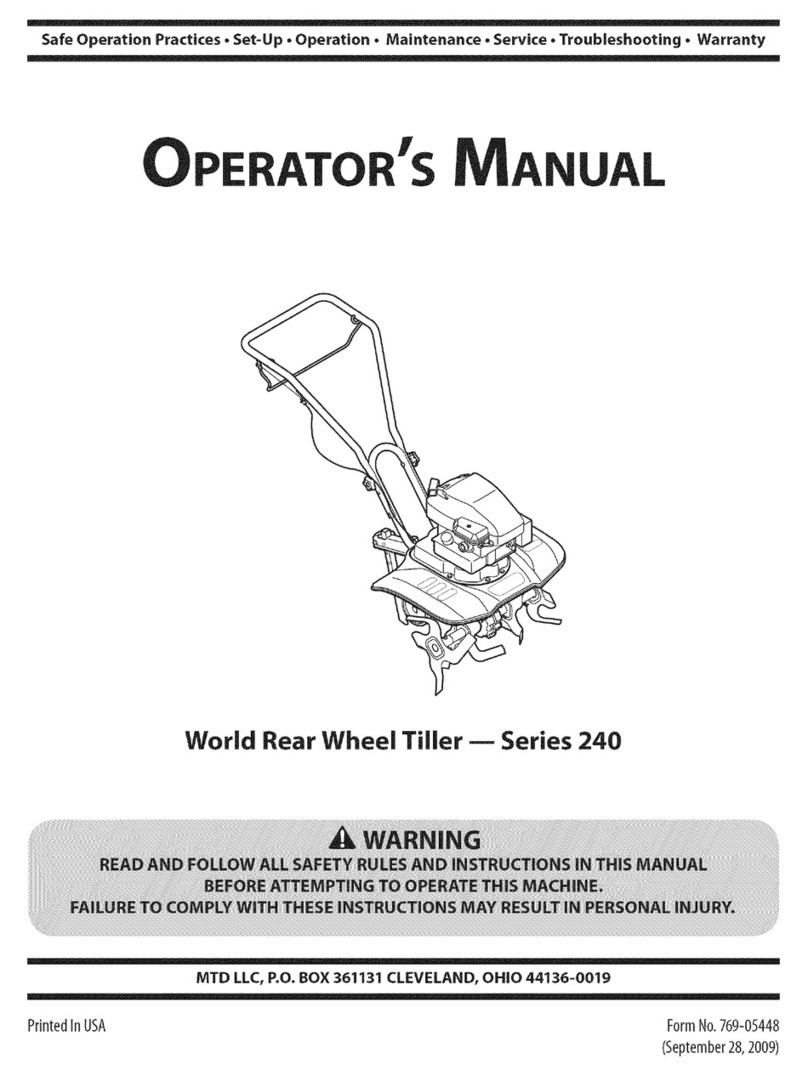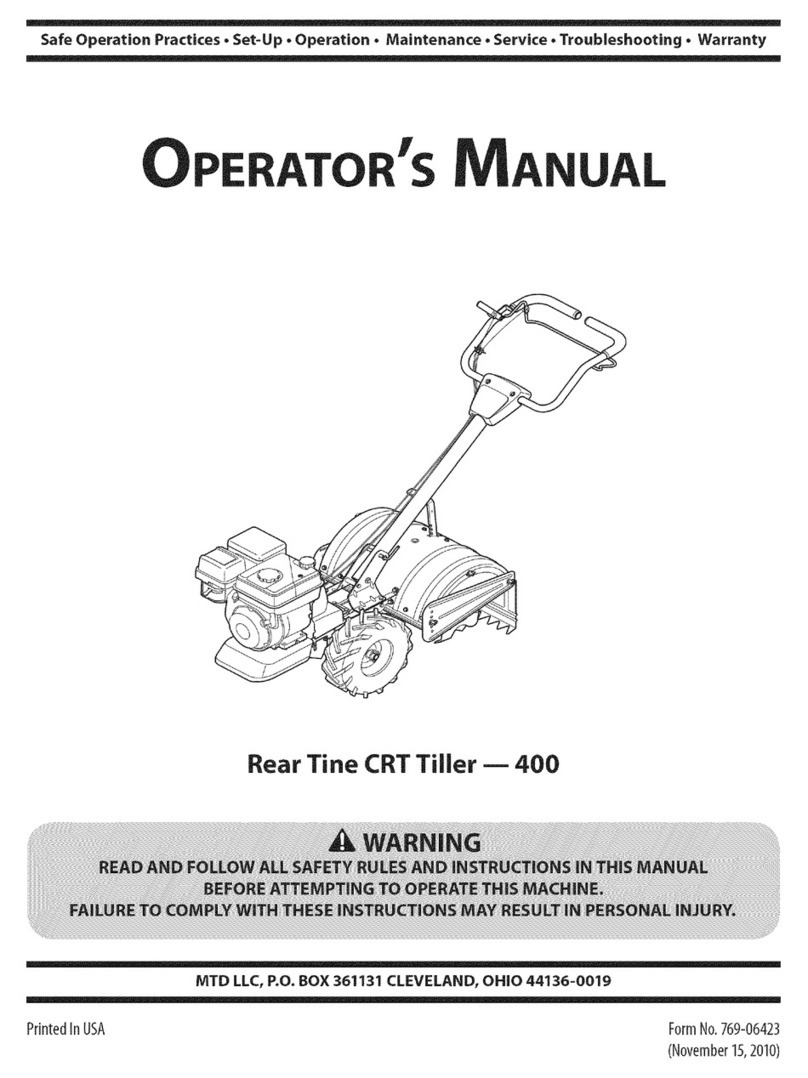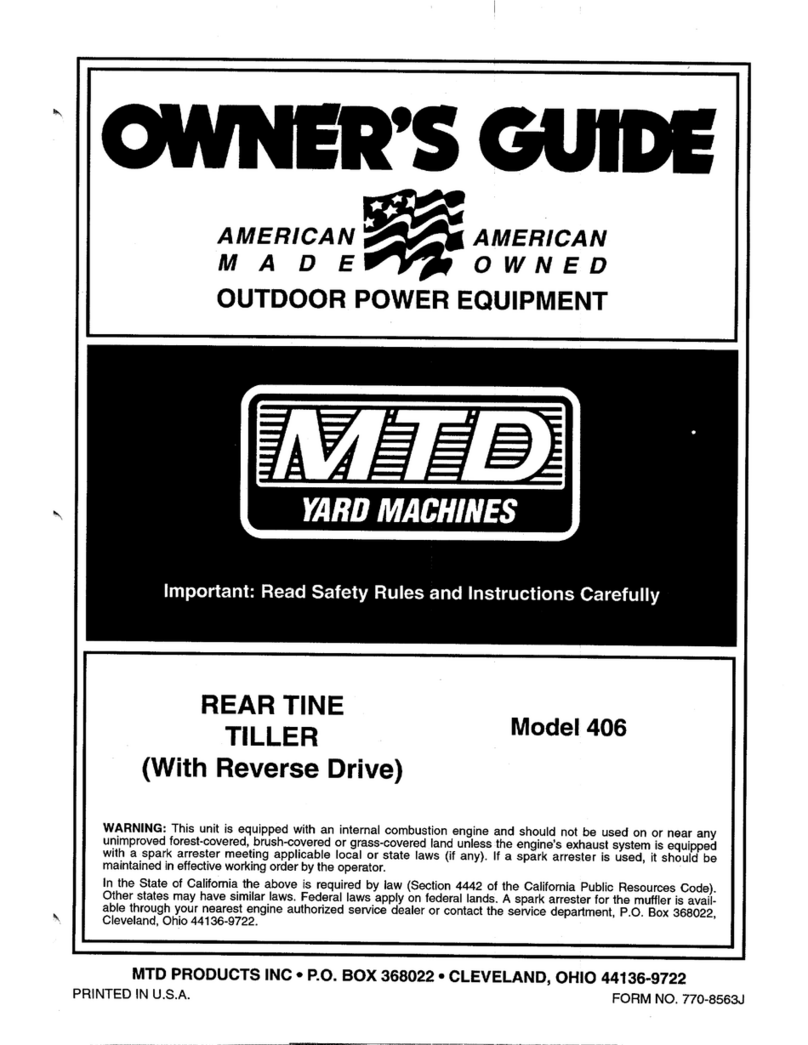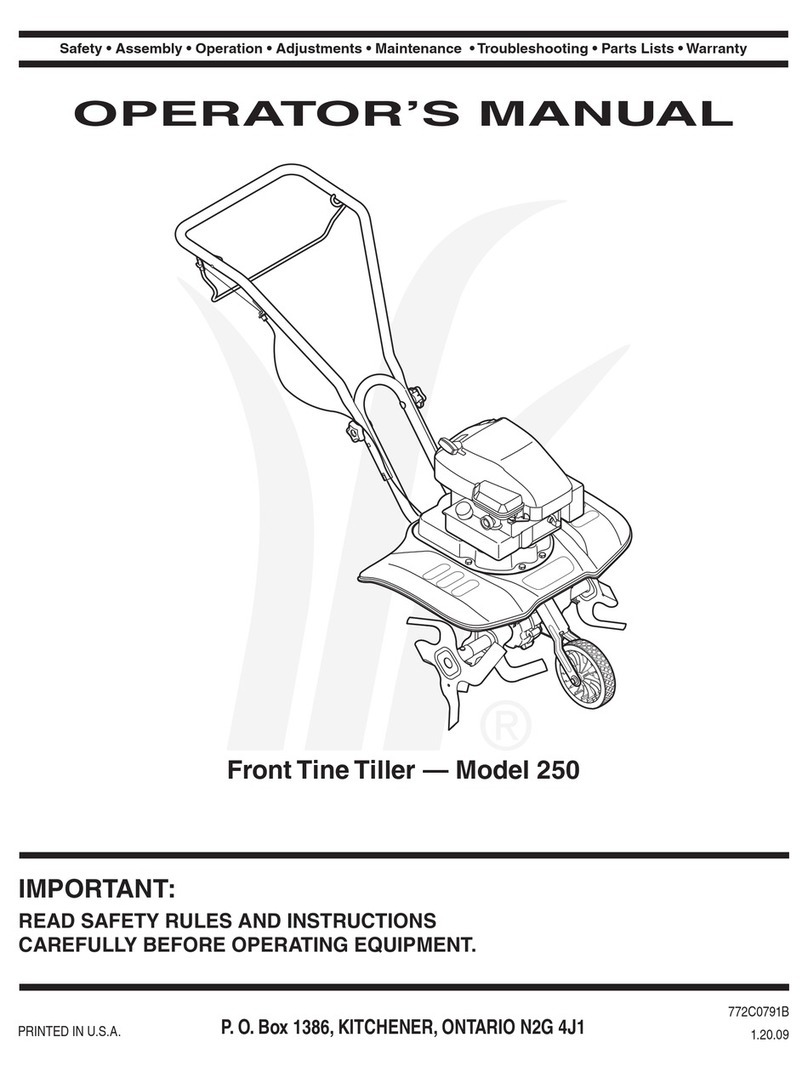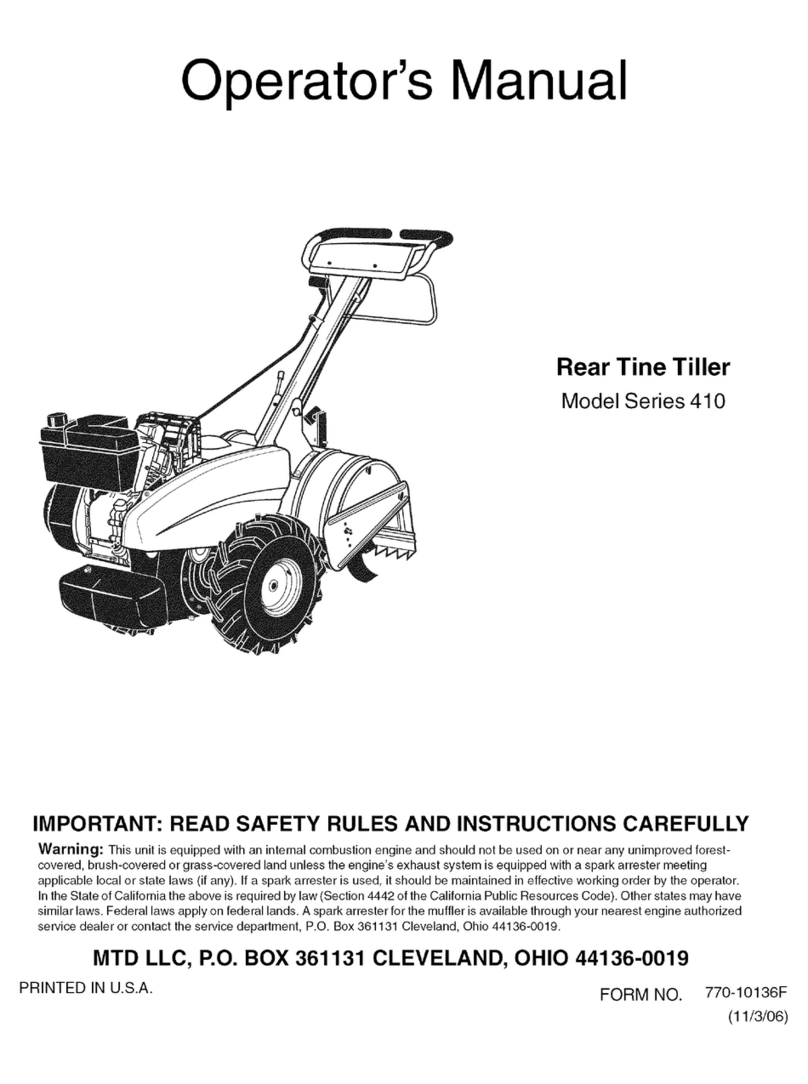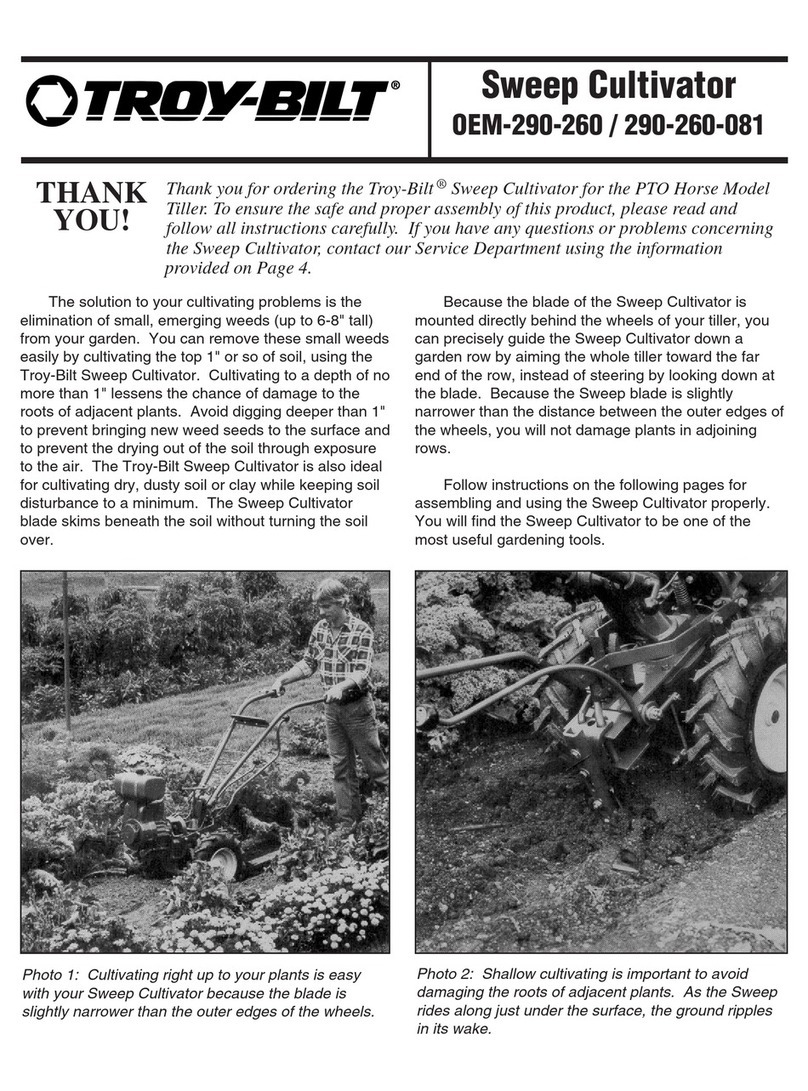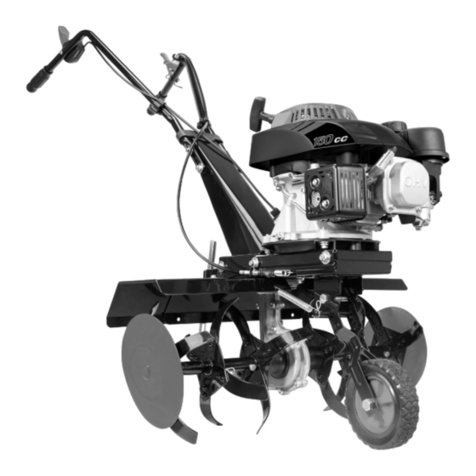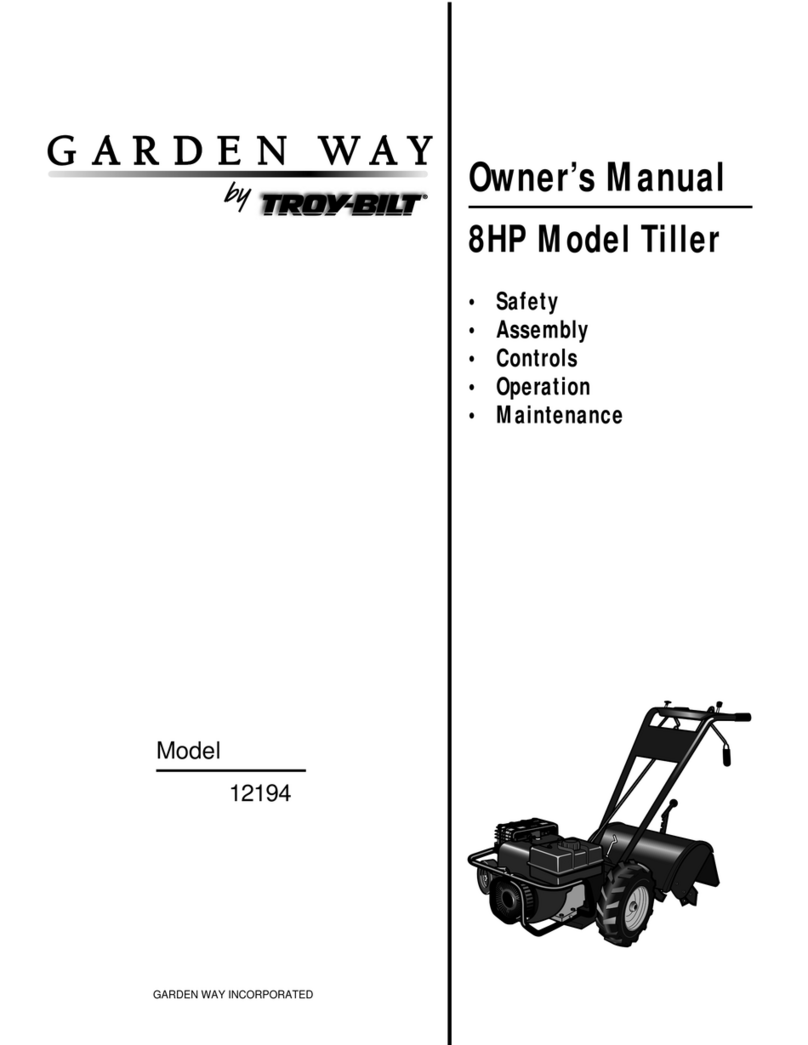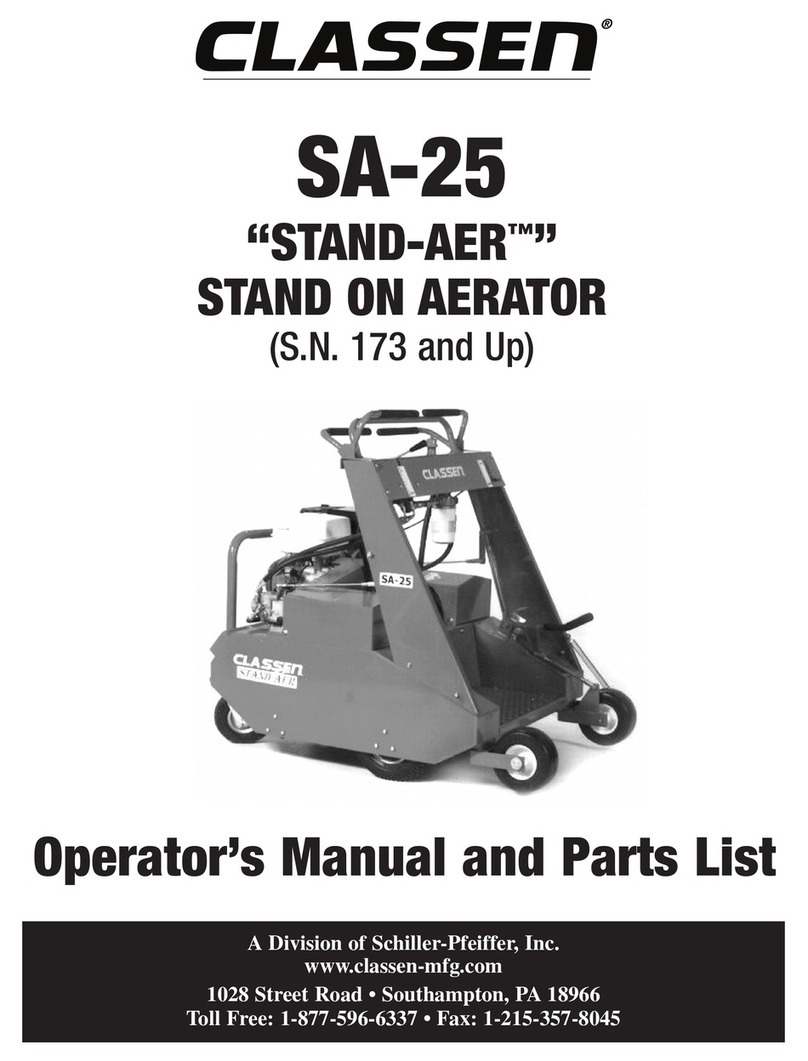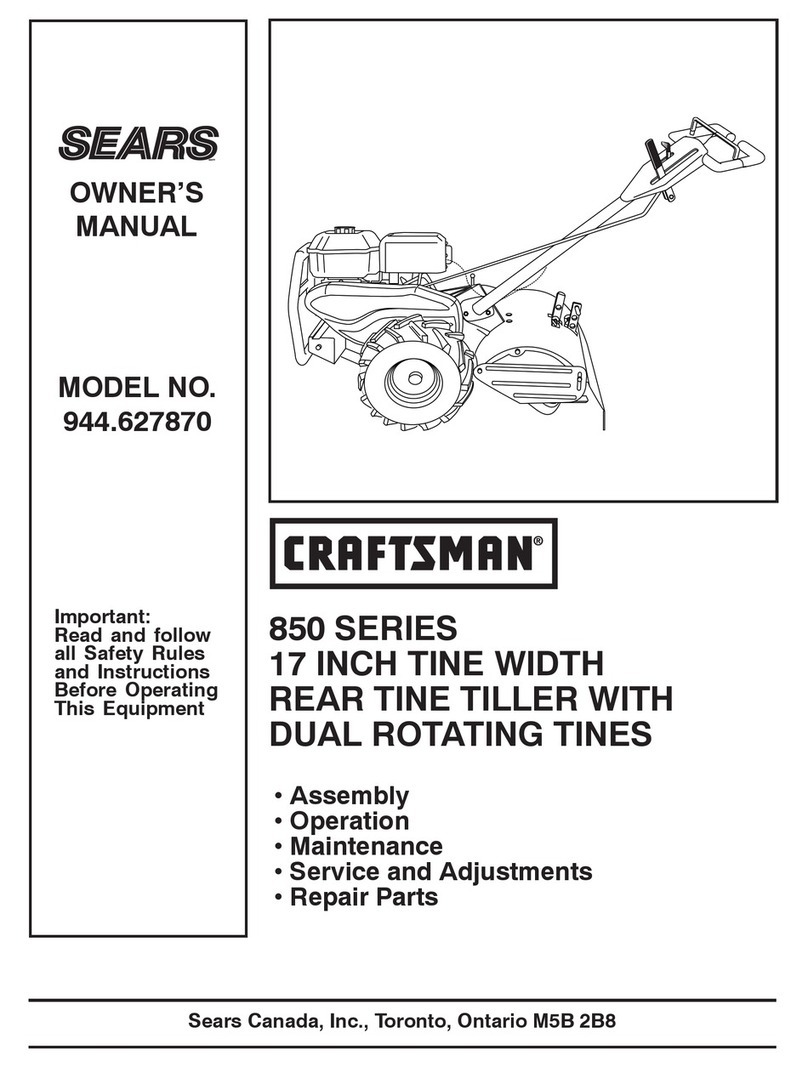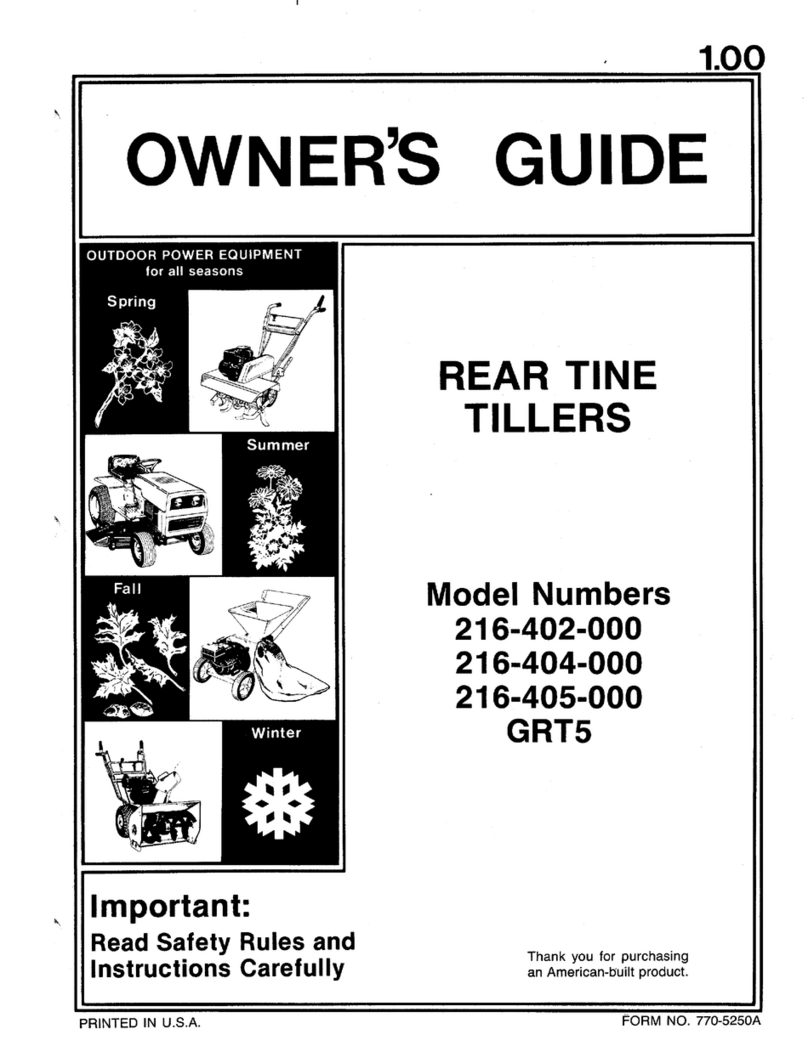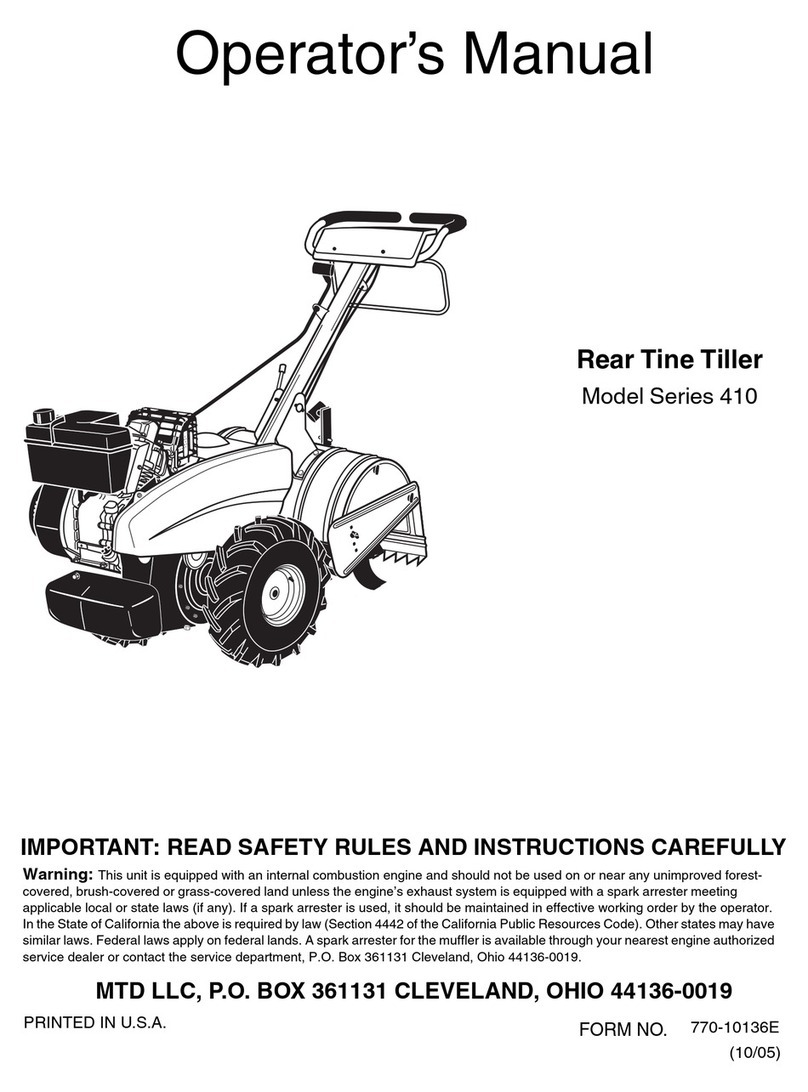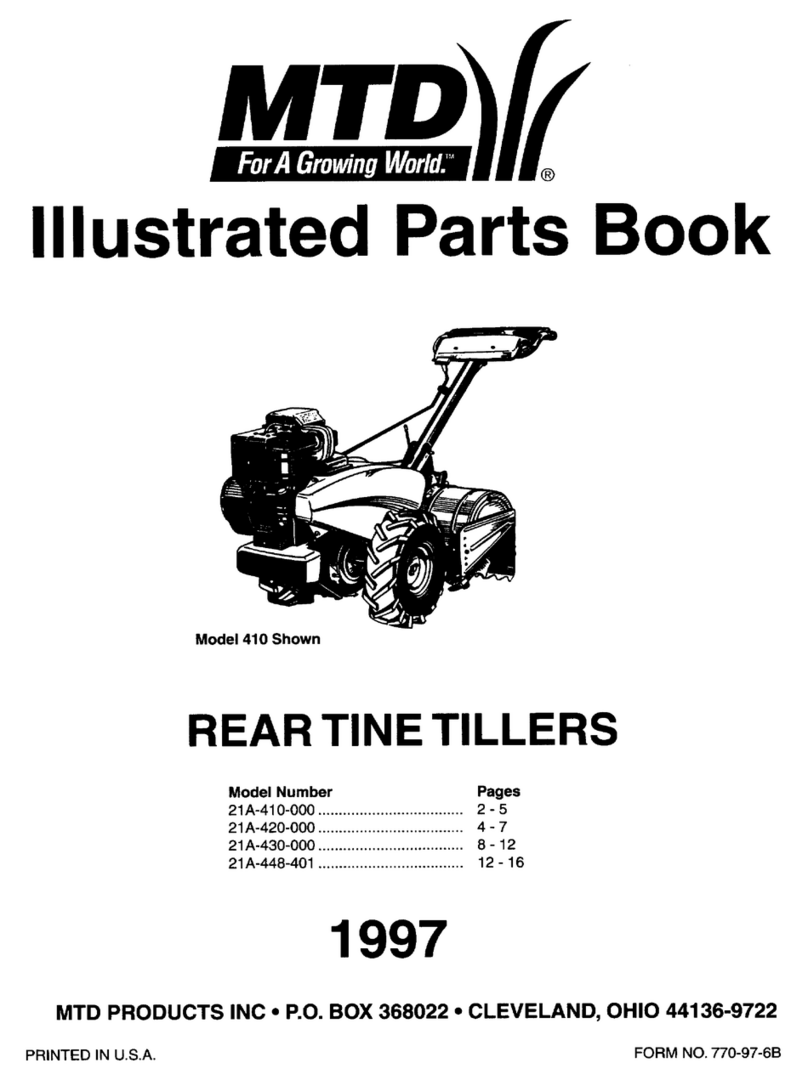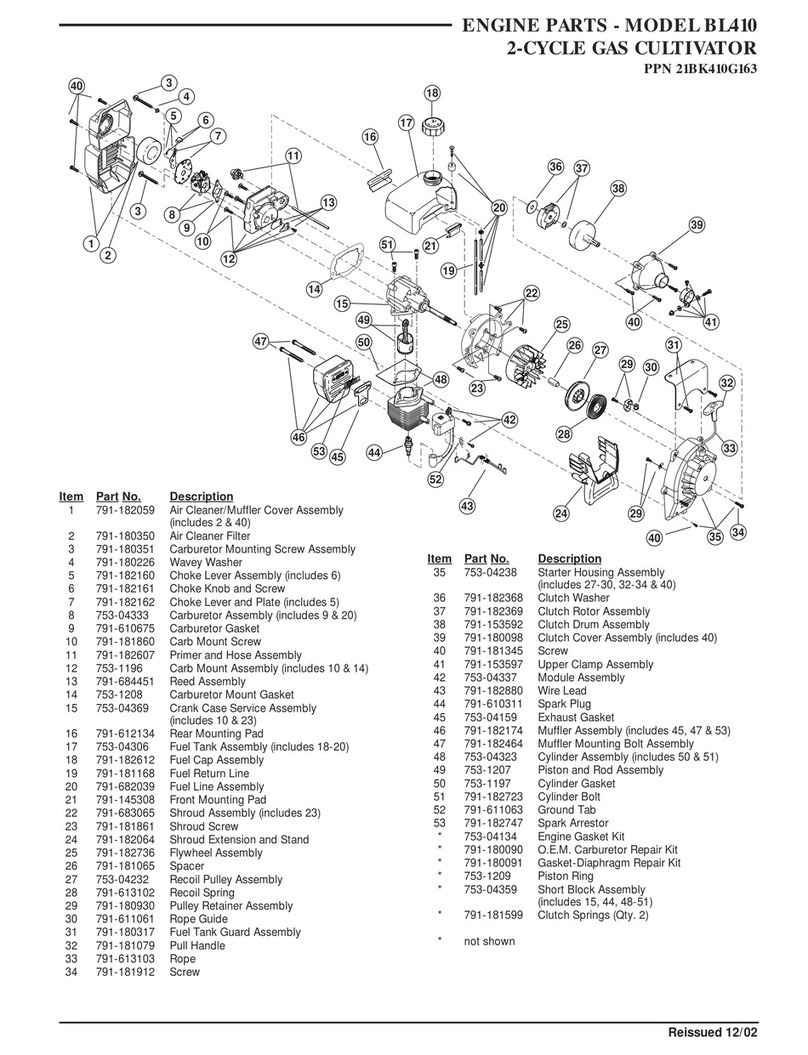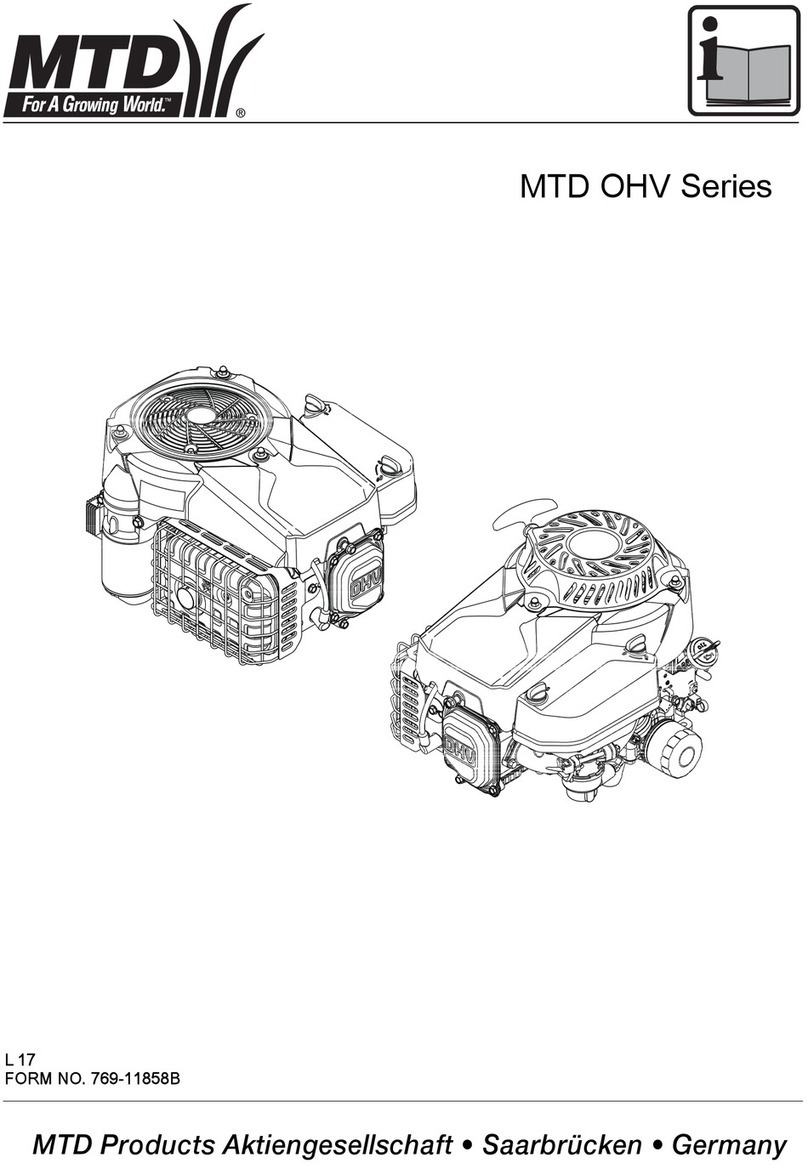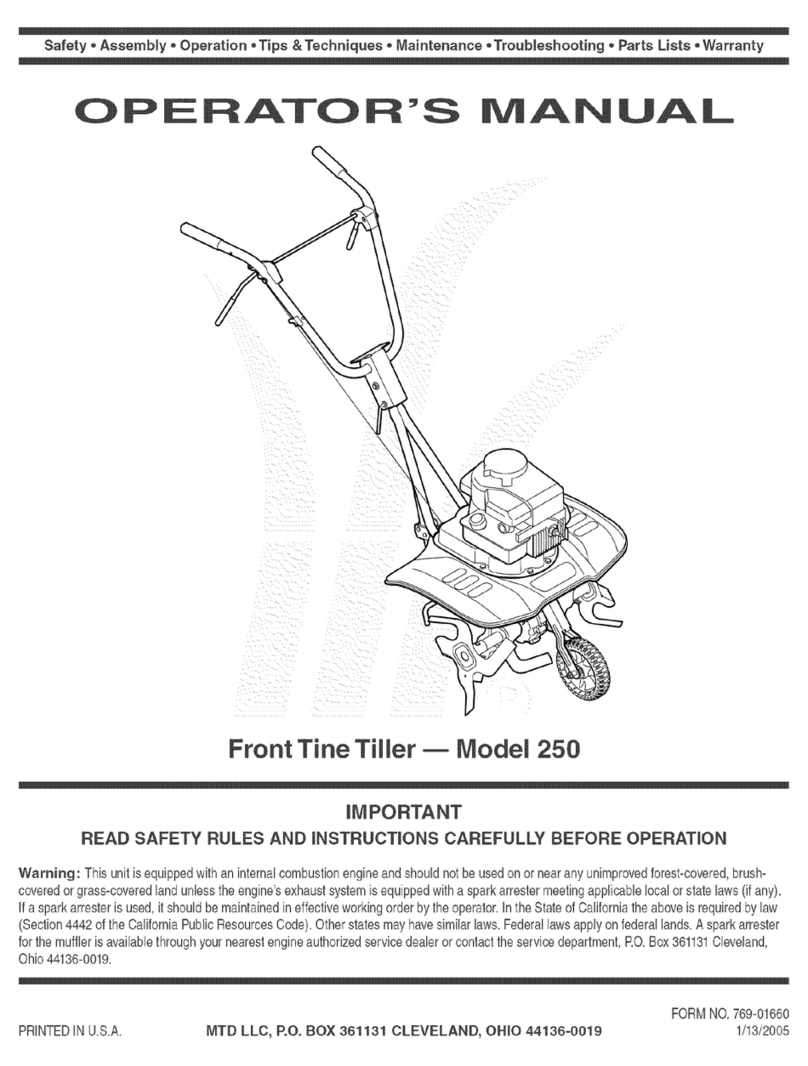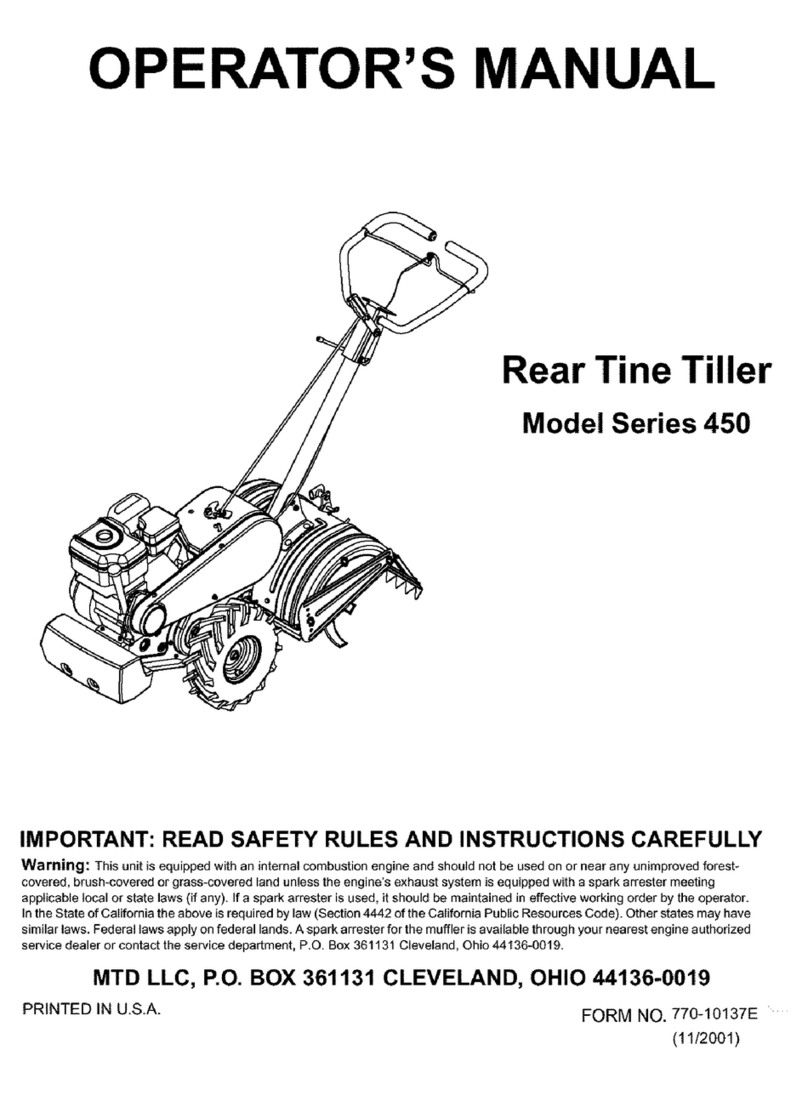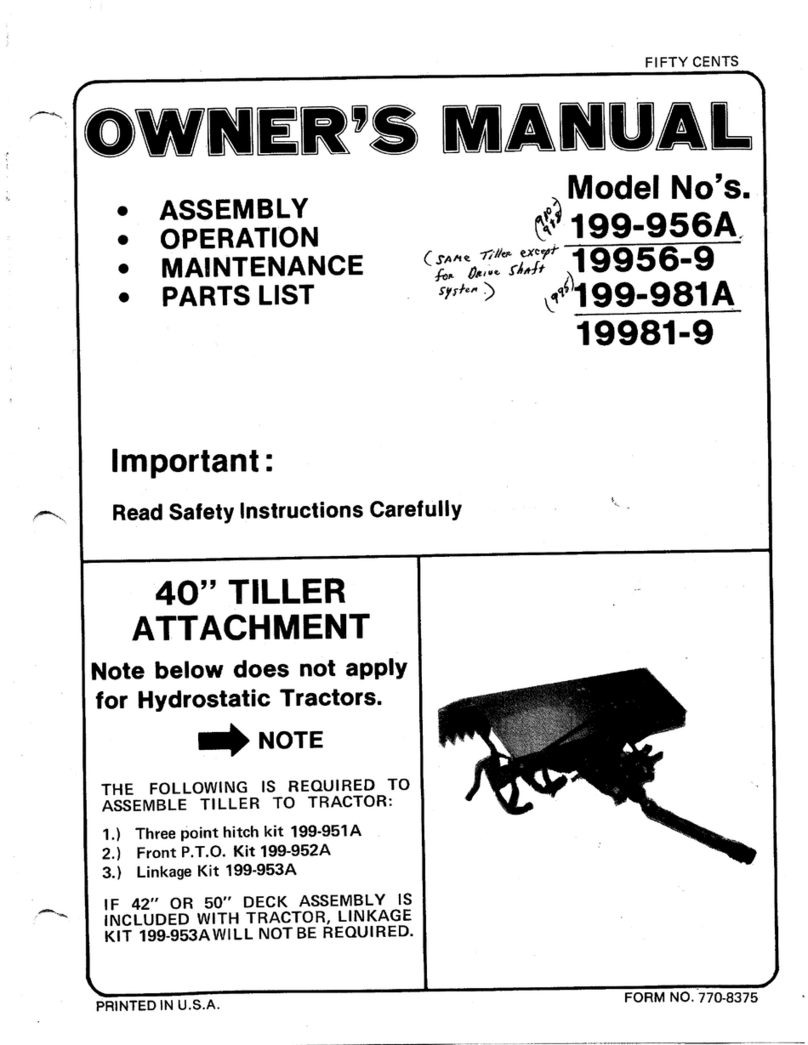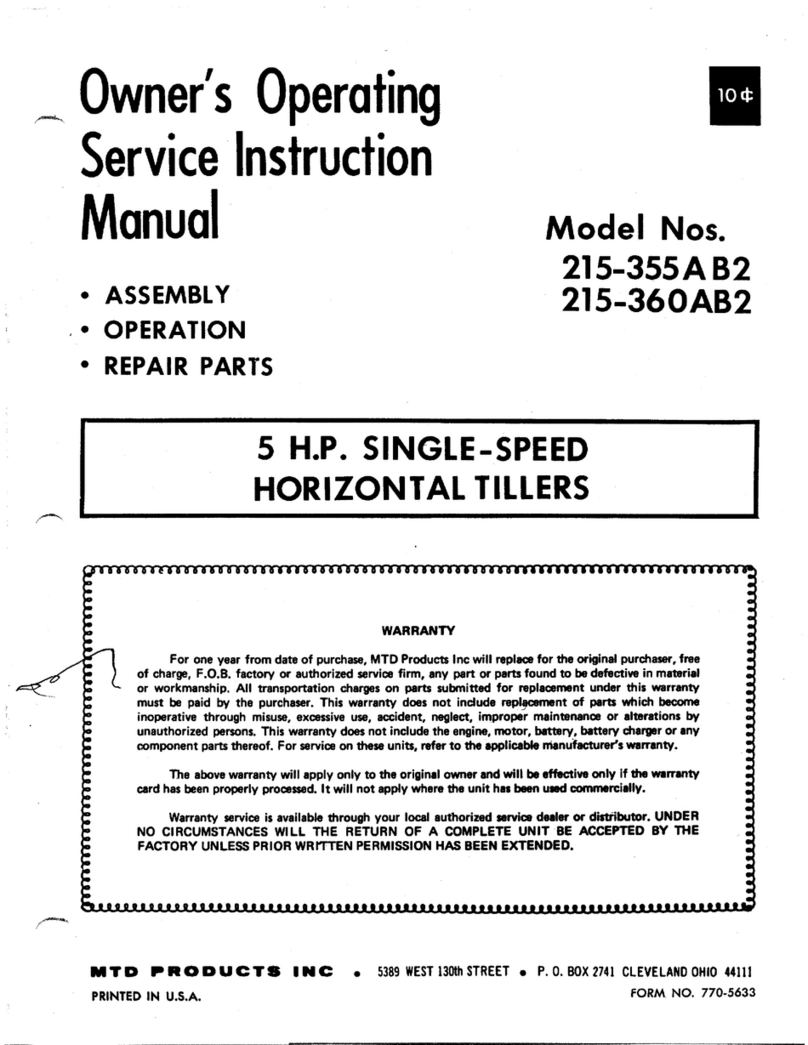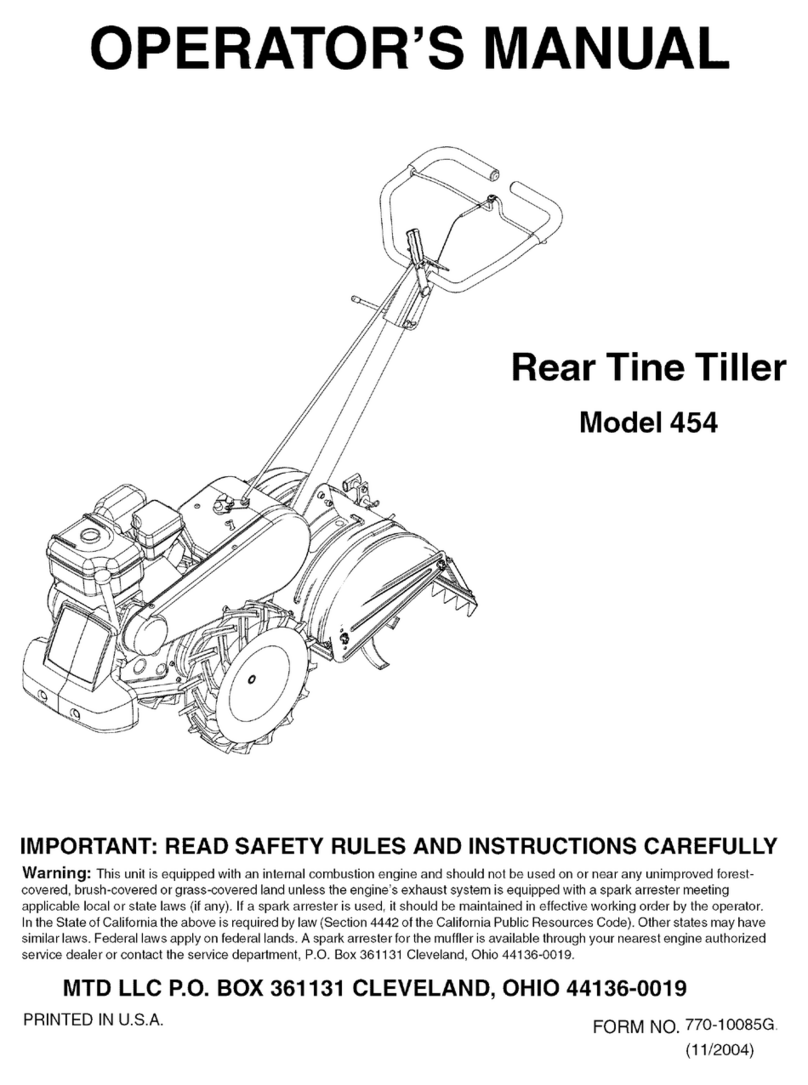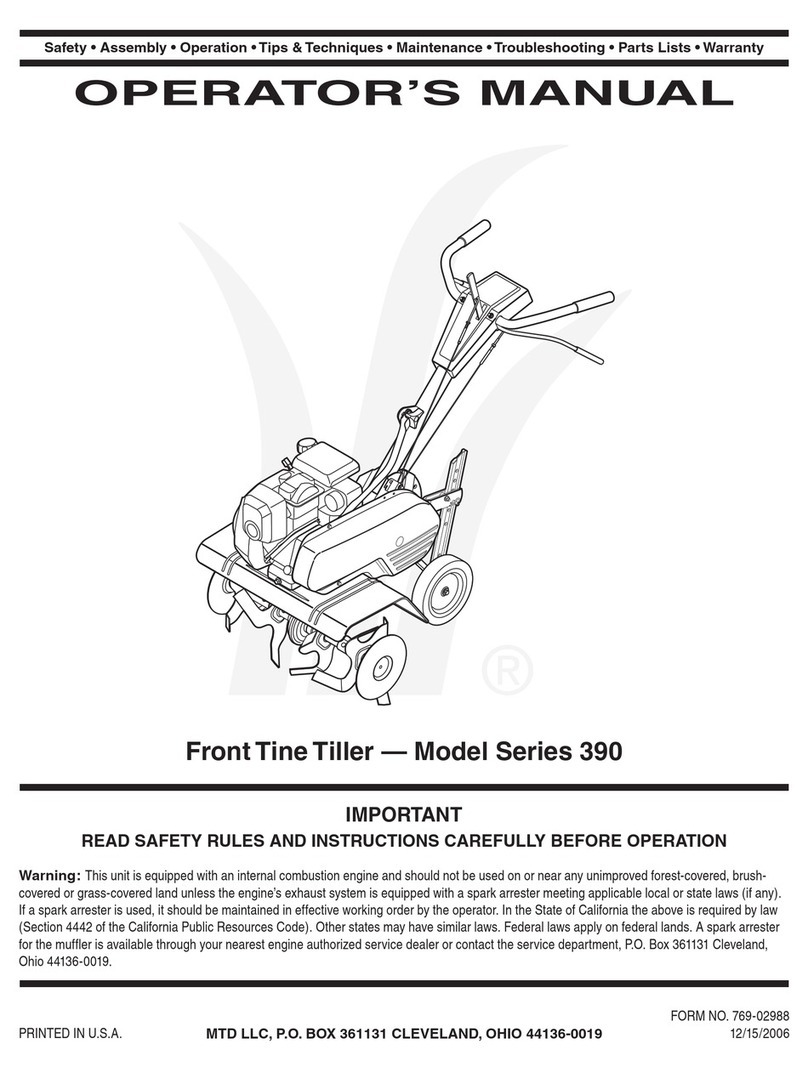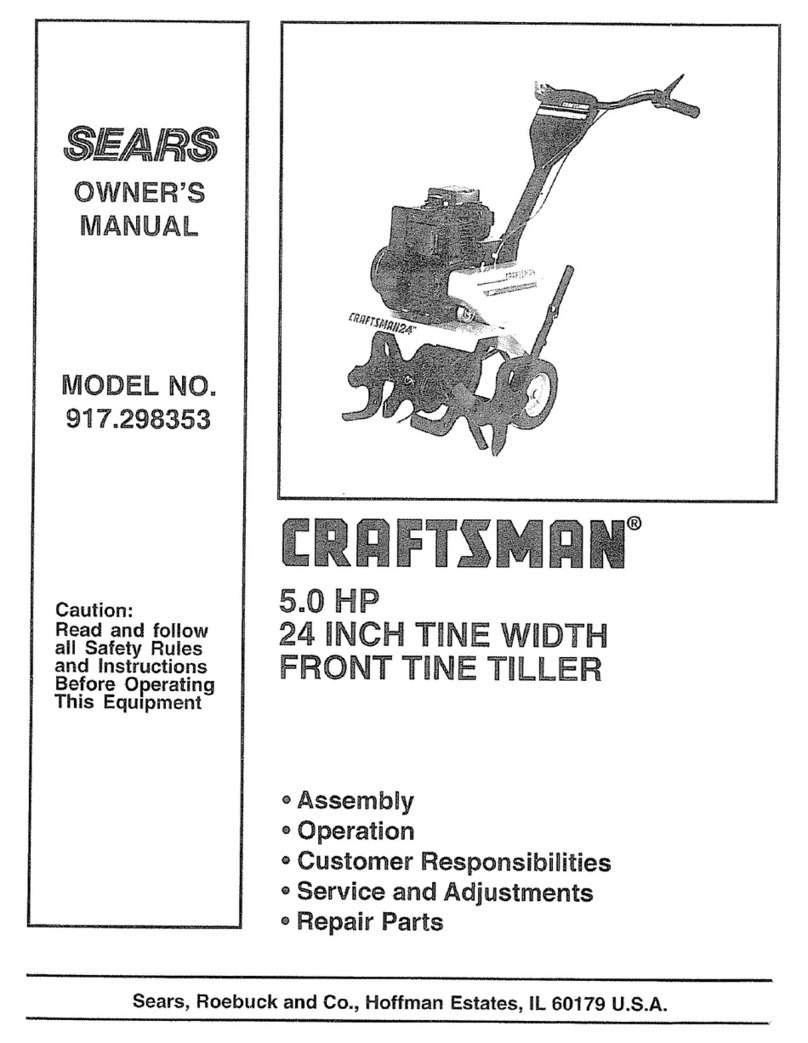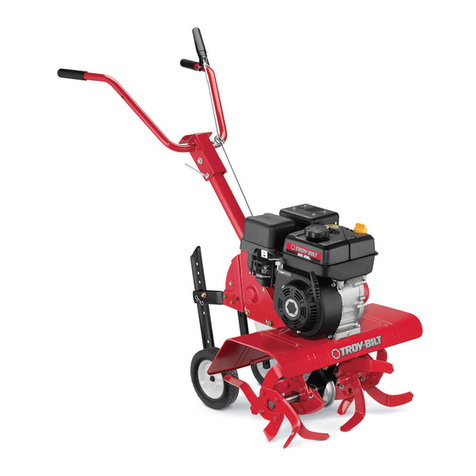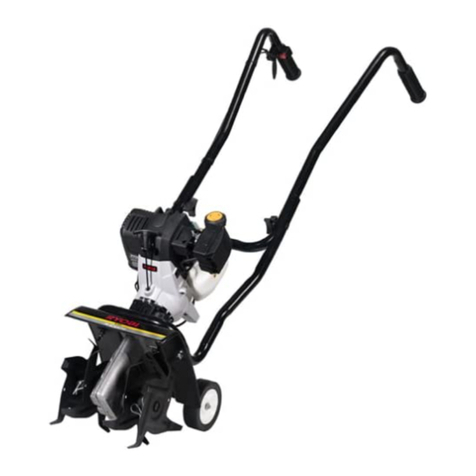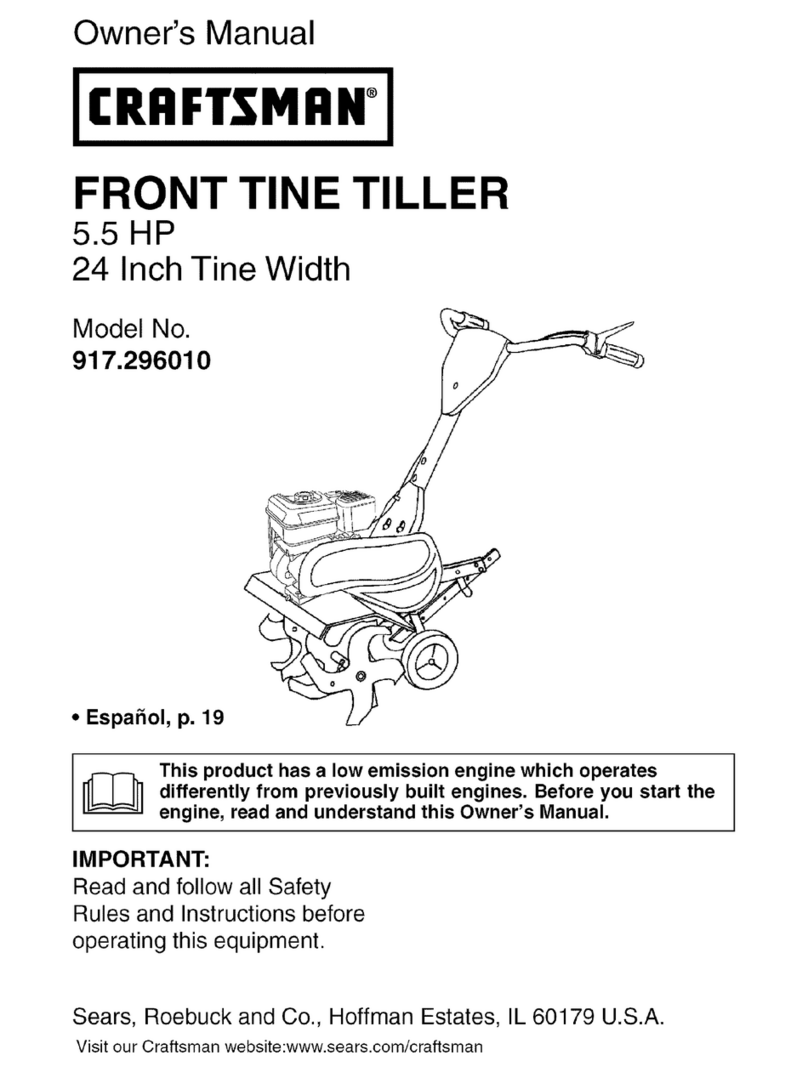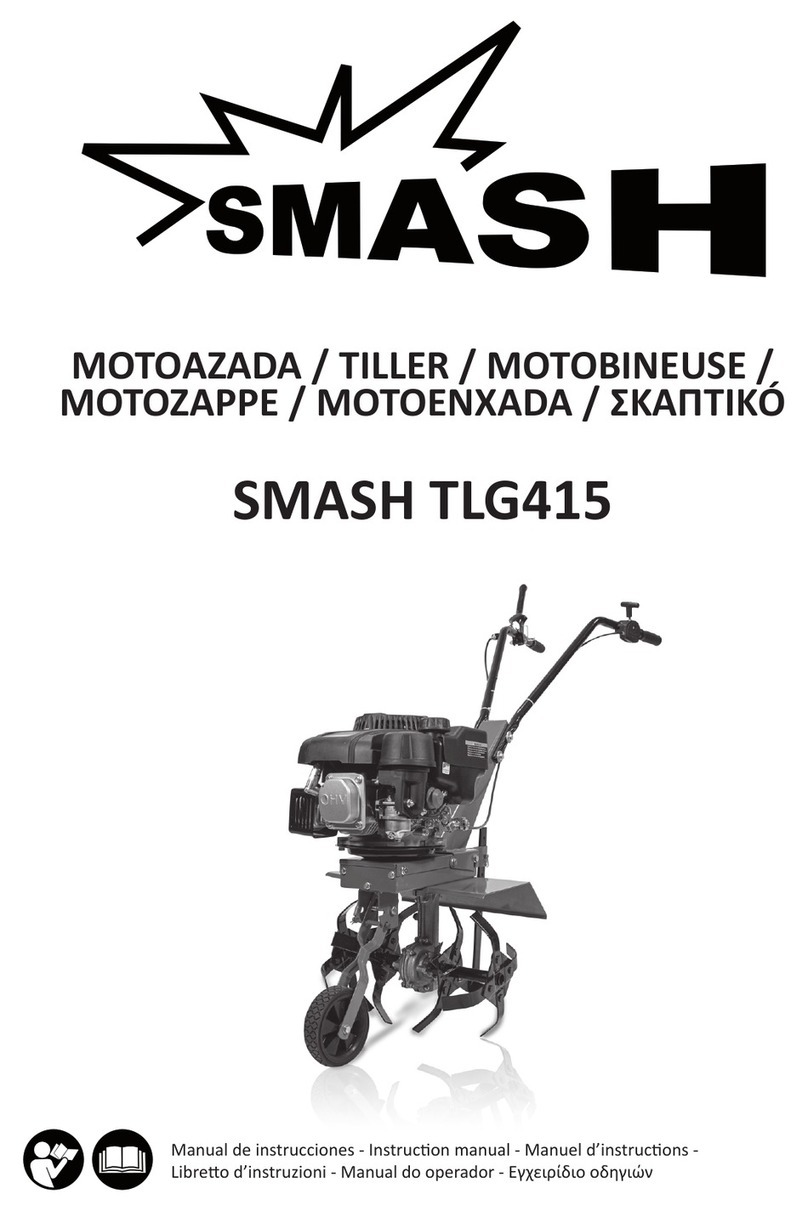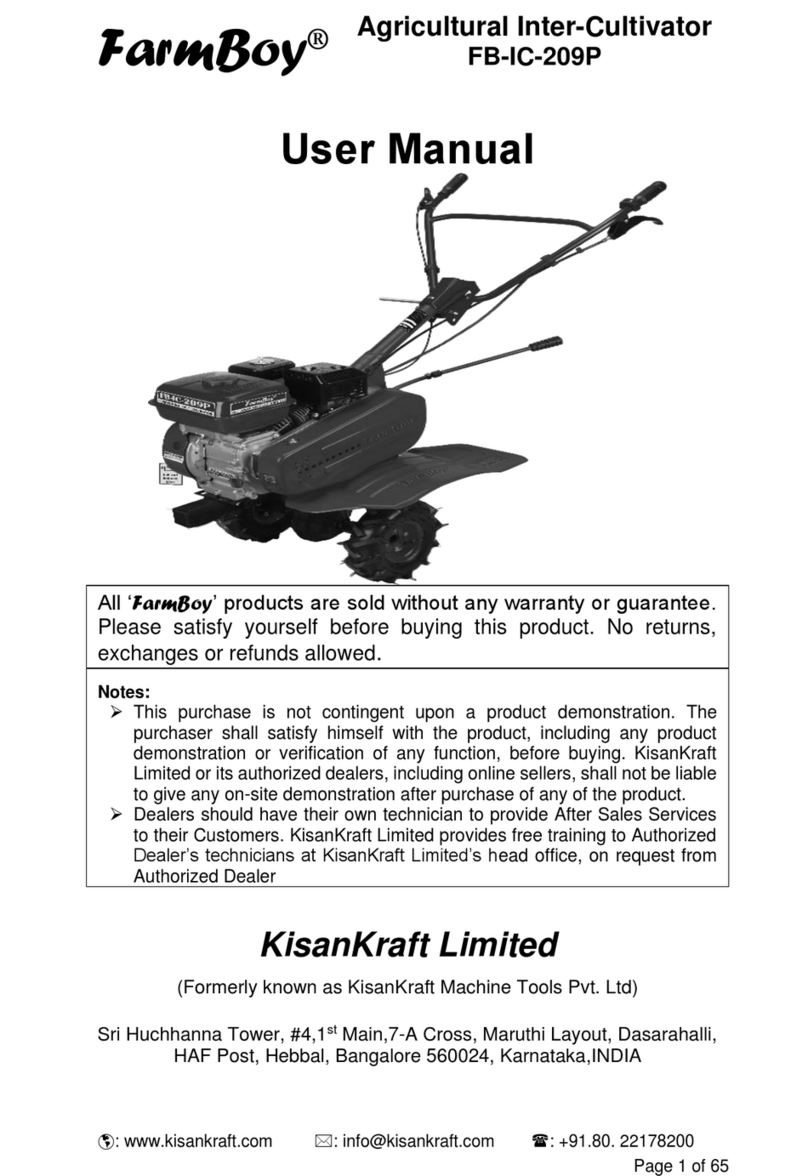
4se c t i O n 2 — iM p O r t a n t sa f e Op e r a t i O n pr a c t i c e s
After striking a foreign object, stop the engine, disconnect11.
the spark plug wire and ground against the engine.
Thoroughly inspect the machine for any damage. Repair
the damage before starting and operating.
Disengage all clutch levers (if fitted) and stop engine12.
before you leave the operating position (behind the
handles). Wait until the tines come to a complete stop
before unclogging the tines, making any adjustments, or
inspections.
Never run an engine indoors or in a poorly ventilated area.13.
Engine exhaust contains carbon monoxide, an odorless
and deadly gas.
Muffler and engine become hot and can cause a burn. Do14.
not touch.
Use caution when tilling near fences, buildings and15.
underground utilities. Rotating tines can cause property
damage or personal injury.
Do not overload machine capacity by attempting to till soil16.
too deep at too fast of a rate.
If the machine should start making an unusual noise or17.
vibration, stop the engine, disconnect the spark plug wire
and ground it against the engine. Inspect thoroughly for
damage. Repair any damage before starting and operating.
Keep all shields, guards, and safety devices in place and18.
operating properly.
Never pick up or carry machine while the engine is running.
Use only attachments and accessories approved by the20.
manufacturer. Failure to do so can result in personal injury.
If situations occur which are not covered in this manual, use21.
care and good judgement. Contact Customer Support for
assistance and the name of you nearest servicing dealer..
Maintenance & Storage
Keep machine, attachments and accessories in safe1.
working order.
Allow a machine to cool at least five minutes before2.
storing. Never tamper with safety devices. Check their
proper operation regularly.
Check bolts and screws for proper tightness at frequent3.
intervals to keep the machine in safe working condition.
Also, visually inspect machine for any damage.
4.
and make certain the tines and all moving parts have
stopped. Disconnect the spark plug wire and ground it
against the engine to prevent unintended starting.
Do not change the engine governor settings or over-speed5.
the engine. The governor controls the maximum safe
operating speed of engine.
Maintain or replace safety and instruction labels, as6.
necessary.
Follow this manual for safe loading, unloading,7.
transporting, and storage of this machine.
8.
if the machine is to be stored for an extended period.
When practical, remove gas-powered equipmentc.
from the truck or trailer and refuel it on the ground.
If this is not possible, then refuel such equipment on
a trailer with a portable container, rather than from a
gasoline dispenser nozzle.
Keep the nozzle in contact with the rim of the fueld.
tank or container opening at all times until fueling is
complete. Do not use a nozzle lock-open device.
Extinguish all cigarettes, cigars, pipes and othere.
sources of ignition.
Never fuel machine indoors.f.
Never remove gas cap or add fuel while the engineg.
is hot or running. Allow engine to cool at least two
minutes before refueling.
Never over fill fuel tank. Fill tank to no more than ½h.
inch below bottom of filler neck to allow space for
fuel expansion.
Replace gasoline cap and tighten securely.i.
If gasoline is spilled, wipe it off the engine andj.
equipment. Move unit to another area. Wait 5
minutes before starting the engine.
To reduce fire hazards, keep machine free of grass,k.
leaves, or other debris build-up. Clean up oil or fuel
spillage and remove any fuel soaked debris.
Never store the machine or fuel container insidel.
where there is an open flame, spark or pilot light
as on a water heater, space heater, furnace, clothes
dryer or other gas appliances.
Operation
Do not put hands or feet near rotating parts. Contact with1.
the rotating parts can amputate hands and feet.
Do not operate machine while under the influence of2.
alcohol or drugs.
Never operate this machine without good visibility or light.3.
Always be sure of your footing and keep a firm hold on the
handles.
Keep bystanders away from the machine while it is in4.
operation. Stop the machine if anyone enters the area.
5.
in the ground and propel the tiller forward. If this occurs,
let go of the handle bars and do not restrain the machine.
Exercise extreme caution when operating on or crossing6.
gravel surfaces. Stay alert for hidden hazards or traffic. Do
not carry passengers.
Never operate the machine at high transport speeds on7.
hard or slippery surfaces.
Exercise caution to avoid slipping or falling.8.
Look down and behind and use care when in reverse or
pulling machine towards you.
Start the engine according to the instructions found in this10.
manual and keep feet well away from the tines at all times.
